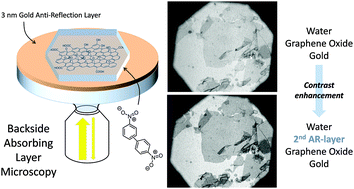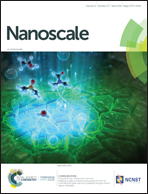Ideal optical contrast for 2D material observation using bi-layer antireflection absorbing substrates†
Abstract
The capability to observe 2D materials with optical microscopy techniques is of central importance in the development of the field and is a driving force for the assembly and study of 2D material van der Waals heterostructures. Such an observation of ultrathin materials usually benefits from antireflection conditions associated with the choice of a particular substrate geometry. The most common configuration uses a transparent oxide layer with a thickness minimizing light reflection at the air/substrate interface when light travels from air to the substrate. Backside Absorbing Layer Microscopy (BALM) is a newly proposed configuration in which light travels from glass to air (or another medium such as water or a solvent) and the antireflection layer is a light-absorbing material (typically a metal). We recently showed that this technique produces images of 2D materials with unprecedented contrast and can be ideally coupled to chemical and electrochemical experiments. Here, we show that contrast can be optimal using double-layer antireflection coatings. By following in situ and with sub-nm precision the controlled deposition of molecules, we notably establish precisely the ideal observation conditions for graphene oxide monolayers which represent one of the most challenging 2D material cases in terms of transparency and thickness. We also provide guidelines for the selection of antireflection coatings applicable to a large variety of nanomaterials. This work strengthens the potential of BALM as a generic, powerful and versatile technique for the study of molecular-scale materials and phenomena.



 Please wait while we load your content...
Please wait while we load your content...